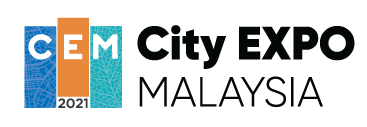Full Paper Submission
Type of Content
a) Title
Your paper title should be specific, concise, and descriptive. Avoid using unnecessary words such as “new” or “novel”. Include keywords that will help a reader find your paper.
b) Abstract
Provide a concise summary of the research conducted. Include the conclusions reached and the potential implications of those conclusions. Your abstract should also:
- Consist of a single paragraph up to 300 words, with correct grammar and unambiguous terminology.
- Be self-contained. No abbreviations, footnotes, references, or mathematical equations.
- Highlight what is unique in your work.
- Include 3-5 keywords or phrases that describe your contents to help readers find your paper.
c) Funding
If your paper was supported by a funding source, include the funder’s name and grant information in a footnote on the first page of the paper.
d) Introduction
Help the reader understand why your paper is important and what it is contributing to the field:
- Start by giving the reader a brief overview of the current state of research / topic in your subject area.
- Progress to more detailed information (objectives / background of the problem / significance / contribution) of the project.
e) Methods
Research methods are the strategies, processes or techniques utilized in the collection of data or evidence for analysis in order to uncover new information or create better understanding of a topic.
f) Project Details
Research : Write and highlight your important findings in your results. Use the same order as the subheadings of the methods section. Match the results with the research questions from the introduction. Your results should answer your research questions.
Project : Project descriptions provide the following details to the applicants: the problem the project will address, a set of goals for the project, the overall objectives for the project, as well as a project plan that describes the activities the members have undertaken to complete the project.
It is a declaration of the project and its idea and context to explain the goals and objectives to be reached, the business need and problem to be addressed, potentials pitfalls and challenges, approaches and execution methods, resource estimates, people and organizations involved, and other relevant information that explains the need for project startup and aims to describe the amount of work planned for implementation.
It can also include other relevant details that deem suitable.
Others : Descriptive details relevant to the topic of your paper.
g) Conclusion
Summarise your key findings. Include important conclusions that can be drawn and further implications for the field. Discuss benefits or shortcomings of your work and suggest future areas for research / exploration.
h) Acknowledgements
You can recognise individuals who provided assistance with your work but who do not meet the definition of authorship. The acknowledgments section is optional.
i) References
Provide citation information for all the previous publications referred to in your paper. Cite only those references that directly support your work.
a) Title
Your paper title should be specific, concise, and descriptive. Avoid using unnecessary words such as “new” or “novel”. Include keywords that will help a reader find your paper.
b) Abstract
Provide a concise summary of the research conducted. Include the conclusions reached and the potential implications of those conclusions. Your abstract should also:
c) Funding
If your paper was supported by a funding source, include the funder’s name and grant information in a footnote on the first page of the paper.
d) Introduction
Help the reader understand why your paper is important and what it is contributing to the field:
- Start by giving the reader a brief overview of the current state of research / topic in your subject area.
- Progress to more detailed information (objectives / background of the problem / significance / contribution) of the project.
e) Discussion (Strategies / Project Specifications / Limitations / Guidelines / Framework / Case Study etc.)
Research : Write and highlight your important findings in your results. Use the same order as the subheadings of the methods section. Match the results with the research questions from the introduction. Your results should answer your research questions.
Project : Project descriptions provide the following details to the applicants: the problem the project will address, a set of goals for the project, the overall objectives for the project, as well as a project plan that describes the activities the members have undertaken to complete the project.
It is a declaration of the project and its idea and context to explain the goals and objectives to be reached, the business need and problem to be addressed, potentials pitfalls and challenges, approaches and execution methods, resource estimates, people and organizations involved, and other relevant information that explains the need for project startup and aims to describe the amount of work planned for implementation. It can also include other relevant details that deem suitable.
Others : Descriptive details relevant to the topic of your paper.
f) Conclusion
Summarise your key findings. Include important conclusions that can be drawn and further implications for the field. Discuss benefits or shortcomings of your work and suggest future areas for research / exploration.
g) Acknowledgements
You can recognise individuals who provided assistance with your work but who do not meet the definition of authorship. The acknowledgments section is optional.
h) References
Provide citation information for all the previous publications referred to in your paper. Cite only those references that directly support your work.
a) Title
Your paper title should be specific, concise, and descriptive. Avoid using unnecessary words such as “new” or “novel”. Include keywords that will help a reader find your paper.
b) Abstract
Provide a concise summary of the research conducted. Include the conclusions reached and the potential implications of those conclusions. Your abstract should also:
c) Introduction
Help the reader understand why your paper is important and what it is contributing to the field:
- Start by giving the reader a brief overview of the current state of research / topic in your subject area.
- Progress to more detailed information (objectives / background of the problem / significance / contribution) of the project.
d) Discussion (Strategies / Project Specifications / Limitations / Guidelines / Framework / Case Study etc.)
Research : Write and highlight your important findings in your results. Use the same order as the subheadings of the methods section. Match the results with the research questions from the introduction. Your results should answer your research questions.
Project : Project descriptions provide the following details to the applicants: the problem the project will address, a set of goals for the project, the overall objectives for the project, as well as a project plan that describes the activities the members have undertaken to complete the project.
It is a declaration of the project and its idea and context to explain the goals and objectives to be reached, the business need and problem to be addressed, potentials pitfalls and challenges, approaches and execution methods, resource estimates, people and organizations involved, and other relevant information that explains the need for project startup and aims to describe the amount of work planned for implementation. It can also include other relevant details that deem suitable.
Others : Descriptive details relevant to the topic of your paper.
e) Conclusion
Summarise your key findings. Include important conclusions that can be drawn and further implications for the field. Discuss benefits or shortcomings of your work and suggest future areas for research / exploration.
f) Acknowledgements
You can recognise individuals who provided assistance with your work but who do not meet the definition of authorship. The acknowledgments section is optional.
g) References
Provide citation information for all the previous publications referred to in your paper. Cite only those references that directly support your work.
a) Title
Your paper title should be specific, concise, and descriptive. Avoid using unnecessary words such as “new” or “novel”. Include keywords that will help a reader find your paper.
b) Abstract
Provide a concise summary of the research conducted. Include the conclusions reached and the potential implications of those conclusions. Your abstract should also:
c) Funding
If your paper was supported by a funding source, include the funder’s name and grant information in a footnote on the first page of the paper.
d) Introduction
Help the reader understand why your paper is important and what it is contributing to the field:
- Start by giving the reader a brief overview of the current state of research / topic in your subject area.
- Progress to more detailed information (objectives / background of the problem / significance / contribution) of the project.
e) Methods
Research methods are the strategies, processes or techniques utilized in the collection of data or evidence for analysis in order to uncover new information or create better understanding of a topic.
f) Results & Discussions
Research : Write and highlight your important findings in your results. Use the same order as the subheadings of the methods section. Match the results with the research questions from the introduction. Your results should answer your research questions.
Project : Project descriptions provide the following details to the applicants: the problem the project will address, a set of goals for the project, the overall objectives for the project, as well as a project plan that describes the activities the members have undertaken to complete the project.
It is a declaration of the project and its idea and context to explain the goals and objectives to be reached, the business need and problem to be addressed, potentials pitfalls and challenges, approaches and execution methods, resource estimates, people and organizations involved, and other relevant information that explains the need for project startup and aims to describe the amount of work planned for implementation. It can also include other relevant details that deem suitable.
Others : Descriptive details relevant to the topic of your paper.
g) Conclusion
Summarise your key findings. Include important conclusions that can be drawn and further implications for the field. Discuss benefits or shortcomings of your work and suggest future areas for research / exploration.
h) Acknowledgements
You can recognise individuals who provided assistance with your work but who do not meet the definition of authorship. The acknowledgments section is optional.
i) References
Provide citation information for all the previous publications referred to in your paper. Cite only those references that directly support your work.

